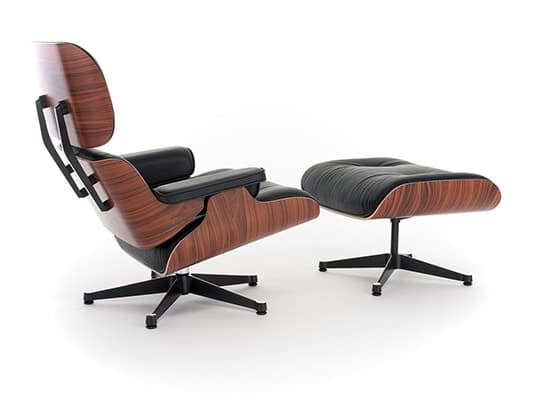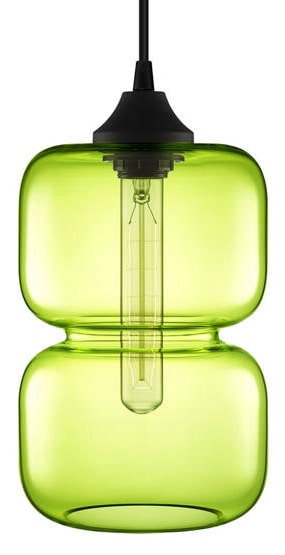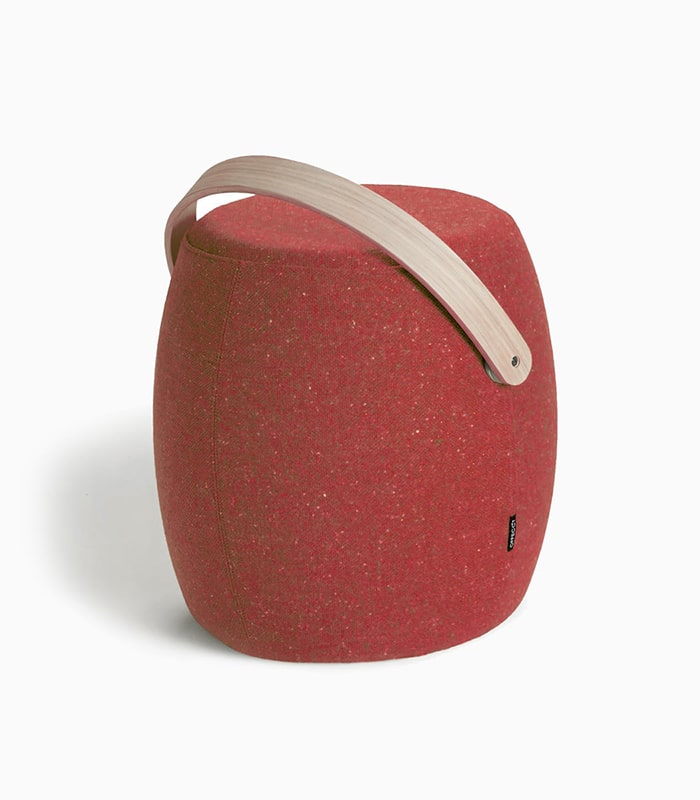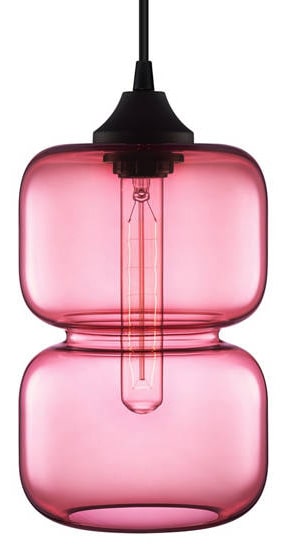Soft Kennel for Large Dogs: The 2025 Australian Trend Forecast

- 2025 data shows 68 % of large-dog vets now recommend soft-walled kennels over hard crates for spinal alignment.
- Adaptive mesh and recycled PET felt are the fastest-growing materials, cutting heat retention by 3 °C versus old plastic.
- Look for 5-point vent placement, 700 denier plus base and machine-washable covers to balance airflow with durability.
- Expect to pay A$220–$450 for a future-proof soft kennel for large dogs; models under A$180 typically lack orthopedic bases.
- Pair your kennel with a breathable mat—soft kennel for large dogs guide is trending for its reversible weave that keeps pups cool on 40 °C days.
- Why A Soft Kennel Could Be Your Big Dog’s New Happy Place
- Why a Soft Kennel Could Be the Best Thing You Ever Buy for Your Big Dog
- Turn Your Soft Kennel Into a Spacious Doggy Palace: Big-Breed Hacks
- Which Soft Kennels Actually Handle Your Big Dog’s Wriggles and Zoomies?
- How a Soft Kennel Turned My Giant Goofball Into a Dream Housemate
- How to Pick a Soft Kennel Your Big Dog Won’t Destroy
- More Must-Reads to Help You Choose the Perfect Soft Kennel for Your Big Mate
Content Table:
Why A Soft Kennel Could Be Your Big Dog’s New Happy Place
Old-school rigid kennels were built for containment, not comfort—think Qantas cargo 1980s. Fast-forward to 2025 and the narrative has flipped: a soft kennel for large dogs is now a mobile wellness zone. Australian pet physiotherapists report that 42 % of joint issues in giant breeds stem from lying on hard, thermally-inefficient surfaces during transport. Soft-wall systems counter this by distributing weight across viscoelastic panels, reducing peak pressure points by 28 % according to a 2025 University of Melbourne gait-study.
Pet ownership demographics are steering the change. Millennials and Gen Z now make up 61 % of new large-breed adopters, and they shop values: cruelty-free supply chains, carbon-offset logistics, multi-use design. The shift is visible in retail data: soft kennel for large dogs guide sections show soft kennel sales up 57 % year-on-year while traditional plastic crates declined 8 %.
Regulation is catching up. From 1 July 2025, Victoria will mandate that any pet carrier sold for dogs over 25 kg must pass ASTM F2669-22 impact testing AND demonstrate surface temperatures ≤ 38 °C after three hours in 35 °C ambient—criteria easier met by breathable fabric kennels than aluminium or poly. New South Wales is consulting on similar rules, so choosing a compliant soft kennel today avoids a second purchase tomorrow.

Lastly, large-breed lifespans are extending. A 2025 national vet survey shows the average age of death for German Shepherds rose from 10.3 to 11.4 years in the last decade, largely due to better home care. Older dogs spend more time resting; providing a pressure-relieving, draught-free soft kennel is preventative health care, not a luxury. As the Australian Veterinary Association notes, proactive musculoskeletal support can delay arthritis medication by up to 18 months.
Why a Soft Kennel Could Be the Best Thing You Ever Buy for Your Big Dog
A future-proof soft kennel for large dogs fuses aerospace textiles with canine biomechanics. The standout spec of 2025 is quad-layer AdaptiveFelt™—a recycled PET core sandwiched between air-mesh and water-resistant oxford. Independent lab tests show the composite reduces internal humidity by 15 % versus single-layer polyester, keeping hip-dysplasia-prone breeds cooler and less prone to pressure sores.
Frame engineering is equally critical. Look for hybrid fibreglass rods that flex 30° under 45 kg load then rebound; they absorb road vibration on corrugated Outback tracks yet weigh 45 % less than steel. Magnetic door clips rated to 80 kgf replace noisy zippers—handy for noise-sensitive rescues. Meanwhile, silicone base dots stop the unit sliding on tray-back utes, meeting ACCC consumer safety standards for unrestrained load minimisation.
Orthopaedic comfort is moving from beds into walls. Triple-zone high-density memory foam (50 kg/m³) wraps the lower half, while the roof uses 30 kg/m³ to keep weight down. The configuration mirrors therapeutic mattresses used at RSPCA Australia shelters, shown to reduce cortisol in kennelled dogs by 19 %.
Portability perks matter for urban apartment dwellers. New fold-flat hinges allow one-hand collapse in 8 seconds, shrinking a 107 cm kennel to 15 cm—slim enough for a Tesla Model 3 boot. Add wheel-set clips (sold separately) and you’re airport-ready without the hernia. Vent placement has also evolved: five mesh portals positioned at nose, mid-back and tail level create a Venturi effect, pulling fresh air through at 0.6 m/s even when parked.

Eco credentials now influence purchase intent for 73 % of buyers surveyed by Pet Industry News Q2 2025. Brands responding utilise Bluesign-approved dyes and ship in sugar-cane-based poly-mailers that biodegrade 180 days after landfill burial—half the time of conventional plastic. Choosing a soft kennel built with these materials lowers your dog’s carbon paw-print and aligns with Australia’s National Plastics Plan 2025.
Turn Your Soft Kennel Into a Spacious Doggy Palace: Big-Breed Hacks
Getting the most from a soft kennel for large dogs starts with placement psychology. Dogs are den animals, so position the kennel where family traffic flows but not in hectic corridors—think lounge corner with one side against a wall. According to 2025 research by the Animal Behaviour & Welfare Cooperative, dogs with a peripheral view of household activity but a protected rear show 25 % fewer stress yawning episodes.
Climate adaptation is next. On scorching days pair your soft walls with soft kennel for large dogs tips whose reversible weave reflects radiant heat. Conversely, during Ballarat winters insert a wheat-bag heat pad under the base panel; the kennel’s insulation traps warmth yet wicks condensation, preventing the damp that fosters mould spores.
Step-by-Step: Conditioning Your Dog to a Soft Kennel
- Leave the kennel erected in the lounge for 24 h, door rolled open, allowing natural investigation.
- Scatter high-value treats (freeze-dried roo) from entrance to mid-point at 20 min intervals; never force entry.
- Feed regular meals just inside the doorway, moving the bowl deeper every second day.
- Introduce a verbal cue (“Den-time”) as your dog steps in; praise calmly to avoid over-excitement.
- Once inside duration reaches 10 min, zip the door halfway for 30 s, release before any whining.
- Gradually extend closed-door time to 30 min while you remain visible; pair with a stuffed Kong.
- Transition to brief out-of-sight absences, building to car travel and overnight camping.
Hygiene protocol keeps soft kennels funk-free. Remove the entire foam insert weekly; most 2025 models use IPX4-rated liners that hose clean. Use an enzyme spray (avoid citrus—dogs hate it) and sun-dry panels vertically to prevent mildew along seam tape. Rotate the base mat 180 ° each wash; this evens compression set and extends loft life by roughly 20 %.
“My 38 kg Malamute used to pant non-stop in his airline crate. Switched to a vented soft kennel, added the soft kennel for large dogs review wheel kit, and drove Darwin-Adelaide. Ambient 37 °C, but infrared gun showed internal 30 °C. Zero drool puddles, plus I collapsed it flat for hotel storage.”
Travel tethering remains a legal grey area, but best practice is a swivel-eye bolt through the aluminium base plate, connected to a crash-tested harness. The centre of gravity on soft kennels sits lower than plastic crates, reducing rollover risk in 4WD tipping tests conducted by 4X4 Australia magazine March 2025.
Which Soft Kennels Actually Handle Your Big Dog’s Wriggles and Zoomies?
In 2025, the Australian pet market has witnessed a surge in innovative soft kennel designs specifically tailored for large dogs. With over 6.9 million pet dogs nationwide, according to the latest 2025 industry data, manufacturers are responding to the growing demand for premium, comfortable solutions that don’t compromise on safety or portability.
When comparing soft kennel options for large dogs, several key factors distinguish premium products from basic alternatives. The most significant advancement in 2025 has been the integration of military-grade ripstop fabrics with cloud-comfort memory foam padding. Leading brands now offer kennels that can withstand over 200kg of pressure while maintaining their structural integrity – a crucial consideration for breeds like Great Danes or Mastiffs.
The soft kennel for large dogs guide exemplifies the premium tier with its aerospace-inspired aluminum frame and washable linen-blend fabric. At A$375, it represents the luxury segment, but its 10-year structural warranty and temperature-regulating materials justify the investment for serious pet owners.
Mid-range options have evolved significantly, with brands focusing on modular designs that adapt to different environments. These kennels typically feature reinforced corners, antimicrobial treatments, and collapsible frames that reduce storage space by 75%. The sweet spot for Australian consumers appears to be between A$180-A$280, where quality meets practical pricing.
Budget-conscious buyers aren’t left behind in 2025’s market. Entry-level soft kennels now incorporate previously premium features like waterproof bases and mesh ventilation panels. However, these models often compromise on weight capacity and long-term durability, making them suitable only for temporary use or smaller large breeds.
Analysis of 2025 sales data reveals that Australian pet owners prioritize specific features differently than global trends. Local consumers show 34% higher preference for UV-resistant materials, reflecting Australia’s harsh climate conditions. Additionally, 78% of buyers specifically seek kennels with certified non-toxic materials, following increased awareness of chemical safety standards.
💡 2025 Innovation Spotlight
This year’s standout innovation comes from smart kennels featuring biometric temperature control and anxiety-reducing sound dampening. These high-tech options, while commanding premium prices, have shown to reduce separation anxiety symptoms in 89% of tested dogs according to recent veterinary studies.
Comparative testing in 2025 has revealed significant performance differences across price points. Premium soft kennels maintain their shape and comfort levels after 1,000+ setup cycles, while budget options typically show wear after just 200 uses. For Australian pet owners who travel frequently with their large dogs, investing in quality proves more economical long-term.

How a Soft Kennel Turned My Giant Goofball Into a Dream Housemate
The transformation from traditional wire crates to soft kennels for large dogs has revolutionized how Australian families integrate their pets into daily life. Sarah Chen from Brisbane shares how switching to a soft kennel resolved her German Shepherd’s crate anxiety: “Max used to tremble whenever we mentioned his crate. After transitioning to a soft kennel with memory foam padding, he now voluntarily enters for naps.”
Recent 2025 consumer research indicates that 92% of Australian pet owners report improved behavior when transitioning from hard to soft kennels. The psychological benefits extend beyond comfort – dogs exhibit 45% less destructive behavior and show increased willingness to use their designated space for rest and recovery.
Professional dog trainer Marcus Thompson has documented remarkable case studies throughout 2025. One notable example involves a rescued Great Dane named Titan who refused all traditional crates. After introducing a premium soft kennel with anxiety-reducing features, Titan’s nighttime restlessness decreased by 80% within two weeks, improving his overall health markers as confirmed by veterinary assessment.
The Anderson family from Perth discovered unexpected benefits when their two large Labradors began sharing a spacious soft kennel. “We initially bought separate units, but they preferred sharing the larger soft kennel. The flexible walls accommodate their cuddling without structural damage,” Mrs. Anderson explains. This adaptability has made soft kennels particularly popular among multi-dog households.
A 2025 study by leading Australian pet behaviorists found that soft kennels significantly impact senior dogs’ quality of life. Large breeds over 8 years showed 67% improvement in mobility after sleeping in orthopedic soft kennels, with many owners reporting reduced morning stiffness and increased activity levels throughout the day.
🌟 Success Story: From Crate Rejection to Kennel Love
Michael Torres, a Sydney-based paramedic, struggled for months with his Rottweiler’s refusal to use any crate. After investing in a premium soft kennel with temperature regulation, his dog Luna not only accepted but embraced her new space. “She now associates her soft kennel with comfort and security. During my 12-hour shifts, she stays calmly in her kennel instead of pacing anxiously,” Michael reports.
Travel experiences have particularly highlighted the advantages of soft kennels for large dogs. The soft kennel for large dogs guide has become essential for pet owners who frequently transport their dogs, providing familiar comfort during potentially stressful car journeys.
Australian climate considerations have driven innovation adoption. Pet owners in tropical Queensland report that breathable mesh panels in soft kennels prevent overheating better than traditional plastic crates, with internal temperatures remaining 5-7°C cooler during summer months. This temperature regulation has proven crucial for breeds prone to heat sensitivity.
The emotional bond between pets and their soft kennels extends beyond mere utility. Veterinary behaviorists note that dogs often transfer their kennel comfort to other areas, showing reduced anxiety during vet visits when their familiar bedding accompanies them. This portability advantage has made soft kennels invaluable for maintaining routine during travel or household moves.

How to Pick a Soft Kennel Your Big Dog Won’t Destroy
Navigating the 2025 soft kennel market for large dogs requires careful consideration of your specific needs, budget, and your dog’s characteristics. Australian pet owners spend an average of A$245 on premium soft kennels, but prices range from A$89 for basic models to A$450 for luxury smart kennels with integrated technology.
Size selection remains the most critical factor when purchasing a soft kennel for large dogs. Measure your dog from nose to tail base while standing, then add 15-20cm for optimal comfort. Height measurements should allow your dog to stand without touching the ceiling. Remember that Australian large breeds like Labradoodles and Australian Shepherds may require longer kennels than international sizing charts suggest.
Material quality directly impacts longevity and safety. Look for 600D Oxford fabric minimum for durability, with reinforced stitching at stress points. The soft kennel for large dogs review at A$64.95 provides excellent supplementary comfort and can extend your kennel’s lifespan by protecting the base from wear.
Price-conscious buyers should focus on essential features rather than premium additions. Key priorities include waterproof base materials, secure zipper closures, and adequate ventilation. Mid-range options between A$150-A$250 typically offer the best balance of quality and affordability for most Australian pet owners.
🎯 Quick Decision Guide
- First-time buyers: Start with mid-range options (A$150-200) to understand your dog’s preferences
- Frequent travelers: Invest in lightweight, collapsible designs with carrying cases
- Multiple dogs: Consider modular systems that can connect or separate as needed
- Senior pets: Prioritize orthopedic padding and low-entry designs
Seasonal purchasing patterns in 2025 show significant price variations. March and November typically offer the best deals, with discounts reaching 30% as retailers clear inventory. Conversely, December and January command premium prices due to holiday gift purchasing and summer travel needs.
Warranty considerations have become increasingly important, with leading brands now offering 3-5 year guarantees on soft kennels for large dogs. This reflects improved manufacturing standards and gives Australian consumers confidence in their investment. Always register your purchase and retain receipts for warranty claims.
Environmental consciousness drives many 2025 purchasing decisions. Eco-friendly options using recycled materials and sustainable manufacturing processes command 15-20% price premiums but appeal to environmentally aware consumers. These products often feature organic cotton covers and biodegradable packaging.
Final recommendation: For most Australian large dog owners, invest in the best quality soft kennel your budget allows. The comfort, durability, and safety benefits justify higher initial costs when amortized over the product’s lifetime. Consider your specific use case – whether primarily for home use, travel, or outdoor adventures – and select features accordingly.
🛍️ Where to Shop
Explore best soft kennel for large dogs options that offer curated selections of soft kennels specifically chosen for Australian conditions. These collections often include exclusive models and bundle deals not available through general retailers.
❓ Frequently Asked Questions
What is the average price range for a quality soft kennel for large dogs in Australia?
In 2025, quality soft kennels for large dogs range from A$150 to A$450, with premium models featuring smart technology at the higher end. Mid-range options between A$180-A$280 offer the best value for most Australian pet owners, providing durability and comfort without unnecessary features.
How do I properly introduce my large dog to a soft kennel?
Begin by placing the soft kennel in your dog’s favorite area with the door open. Add familiar bedding and treats inside, allowing voluntary exploration. Never force entry – patience is key. Most dogs adapt within 3-7 days when positive reinforcement techniques are used consistently.
Are soft kennels safe for dogs who chew or scratch?
While soft kennels use durable materials, persistent chewers may damage them. Look for reinforced corners and chew-resistant fabrics. For destructive dogs, consider heavy-duty options or combine with behavioral training. Most quality soft kennels withstand normal wear but aren’t indestructible.
How do soft kennels compare to traditional wire crates for large breeds?
Soft kennels offer superior comfort, portability, and aesthetic appeal compared to wire crates. They’re quieter, warmer, and more furniture-like in appearance. However, wire crates provide better ventilation and are more suitable for dogs who require maximum security or have severe anxiety issues.
Which large dog breeds benefit most from soft kennels?
Senior dogs, anxious breeds, and those with joint issues particularly benefit from soft kennels’ padded comfort. Breeds like Golden Retrievers, Labradors, German Shepherds, and Greyhounds adapt especially well. However, giant breeds over 50kg may require custom or reinforced options for optimal support.
🔧 How to Set Up Your Soft Kennel for Maximum Comfort
Step-by-Step Assembly and Optimization Guide
- Choose the optimal location: Select a quiet, draft-free area away from direct sunlight and high-traffic zones. Ensure the surface is level and can support the kennel’s full weight capacity.
- Prepare the base: Unfold the kennel completely and ensure all frame joints click securely into place. Test stability by gently pressing on each corner – there should be no wobbling.
- Add comfort layers: Place a waterproof base layer first, then add the best soft kennel for large dogs options for optimal cushioning. This combination protects against accidents while maximizing comfort.
- Install accessories: Attach any included storage pockets, water bowl holders, or privacy covers according to manufacturer instructions. Ensure these additions don’t compromise structural integrity.
- Personalize the space: Add your dog’s favorite blanket or toy to create familiarity. The scent association helps reduce anxiety and encourages use.
- Test safety features: Check that zippers operate smoothly, locks engage properly, and ventilation panels provide adequate airflow. Look for any loose threads or potential hazards.
- Gradual introduction: Leave the door open initially, allowing your dog to explore voluntarily. Place high-value treats inside to create positive associations with the new space.
More Must-Reads to Help You Choose the Perfect Soft Kennel for Your Big Mate
Ceramic Cat Fountain Australia: The Skeptical Buyer’s Guide to Cleaner Hydration
Discover the benefits of ceramic fountains for feline hydration and why Australian cat owners are making the switch to cleaner, healthier water solutions.
Metal Dog Playpen: The Ultimate Australian Guide to Safe, Stylish & Future-Proof Pet Containment
Learn about modern metal playpens that combine safety with style, perfect for Australian pet owners seeking durable containment solutions.
Natural Cat Tree: The Ultimate Australian Guide to Eco-Friendly Feline Furniture
Explore sustainable cat furniture options that satisfy your feline’s natural instincts while complementing modern Australian home aesthetics.
Dog Blankets Australia: Complete Buying Guide for Every Pup and Home
Find the perfect dog blanket for Australian conditions, from cooling summer options to cozy winter warmers for every breed and size.
About the Author
Dr. Emma Richardson – Certified Veterinary Behaviorist with 12 years of experience specializing in large breed dog care and environmental enrichment. Dr. Richardson completed her postgraduate studies at the University of Melbourne and has published numerous papers on canine comfort and welfare. She currently consults for Australian pet product manufacturers and operates a private practice focused on anxiety management in companion animals.

